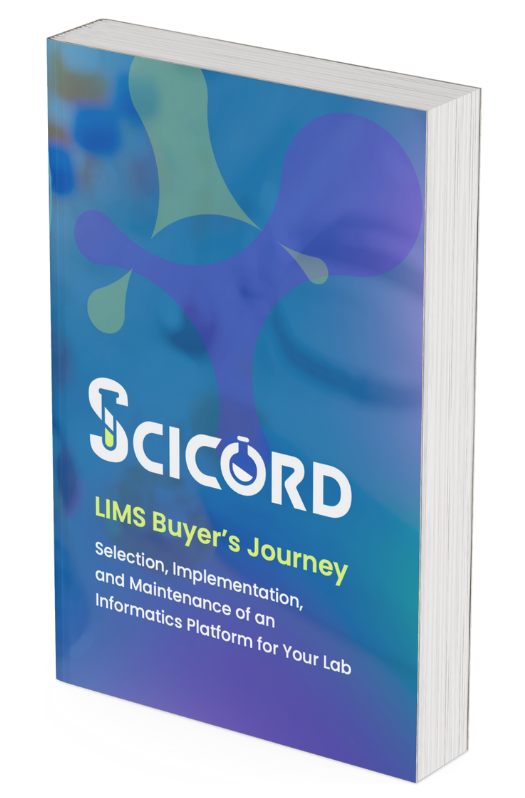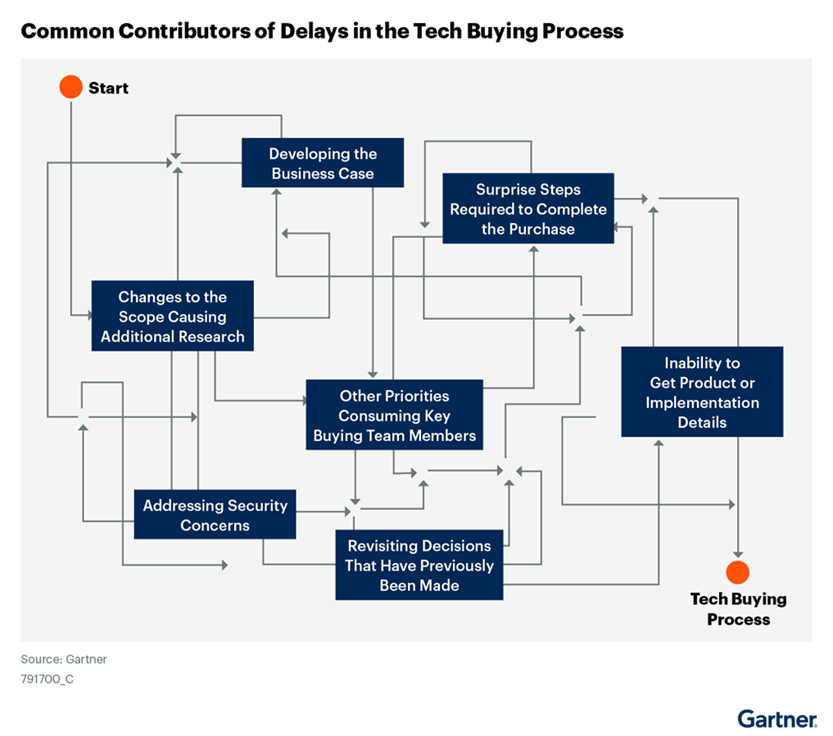
Before we jump into the Buyer’s Guide, lets establish what your needs are. Based on your responses, the guide will be adjusted to cover what you want to know.
Select the one that best describes your organization, then click the Next button.
Include reasons why organizations start the LIMS buying journey
Expert consultants are often engaged to help with a LIMS purchase. Do you want the pros and cons of using a consultant?
Defining your requirements is a critical step in the LIMS buying journey. Want information and guidance on developing requirements?
Do you need guidance on how to research potential vendors and to establish criteria for final vendor selection?
Are you interested in typical purchasing guidelines to greenlight the purchase after your vendor is selected?
LIMS Implementations are often delayed and over budget. Want some tips on setting expectations and best process?
Maintenance will be ongoing for years. Want a list of considerations prior to purchase?
Will your LIMS be validated and do you want to understand the validation process?
Lorem ipsum dolor sit amet, consectetur adipiscing elit, sed do eiusmod tempor incididunt ut labore et dolore magna aliqua. Ut enim ad minim veniam, quis nostrud exercitation ullamco laboris nisi ut aliquip ex ea commodo consequat. Duis aute irure dolor in reprehenderit in voluptate velit esse cillum dolore eu fugiat nulla pariatur. Excepteur sint occaecat cupidatat non proident, sunt in culpa qui officia deserunt mollit anim id est laborum
Lorem ipsum dolor sit amet, consectetur adipiscing elit, sed do eiusmod tempor incididunt ut labore et dolore magna aliqua. Ut enim ad minim veniam, quis nostrud exercitation ullamco laboris nisi ut aliquip ex ea commodo consequat. Duis aute irure dolor in reprehenderit in voluptate velit esse cillum dolore eu fugiat nulla pariatur. Excepteur sint occaecat cupidatat non proident, sunt in culpa qui officia deserunt mollit anim id est laborum
Lorem ipsum dolor sit amet, consectetur adipiscing elit, sed do eiusmod tempor incididunt ut labore et dolore magna aliqua. Ut enim ad minim veniam, quis nostrud exercitation ullamco laboris nisi ut aliquip ex ea commodo consequat. Duis aute irure dolor in reprehenderit in voluptate velit esse cillum dolore eu fugiat nulla pariatur. Excepteur sint occaecat cupidatat non proident, sunt in culpa qui officia deserunt mollit anim id est laborum
Lorem ipsum dolor sit amet, consectetur adipiscing elit, sed do eiusmod tempor incididunt ut labore et dolore magna aliqua. Ut enim ad minim veniam, quis nostrud exercitation ullamco laboris nisi ut aliquip ex ea commodo consequat. Duis aute irure dolor in reprehenderit in voluptate velit esse cillum dolore eu fugiat nulla pariatur. Excepteur sint occaecat cupidatat non proident, sunt in culpa qui officia deserunt mollit anim id est laborum
Lorem ipsum dolor sit amet, consectetur adipiscing elit, sed do eiusmod tempor incididunt ut labore et dolore magna aliqua. Ut enim ad minim veniam, quis nostrud exercitation ullamco laboris nisi ut aliquip ex ea commodo consequat. Duis aute irure dolor in reprehenderit in voluptate velit esse cillum dolore eu fugiat nulla pariatur. Excepteur sint occaecat cupidatat non proident, sunt in culpa qui officia deserunt mollit anim id est laborum
Lorem ipsum dolor sit amet, consectetur adipiscing elit, sed do eiusmod tempor incididunt ut labore et dolore magna aliqua. Ut enim ad minim veniam, quis nostrud exercitation ullamco laboris nisi ut aliquip ex ea commodo consequat. Duis aute irure dolor in reprehenderit in voluptate velit esse cillum dolore eu fugiat nulla pariatur. Excepteur sint occaecat cupidatat non proident, sunt in culpa qui officia deserunt mollit anim id est laborum
Lorem ipsum dolor sit amet, consectetur adipiscing elit, sed do eiusmod tempor incididunt ut labore et dolore magna aliqua. Ut enim ad minim veniam, quis nostrud exercitation ullamco laboris nisi ut aliquip ex ea commodo consequat. Duis aute irure dolor in reprehenderit in voluptate velit esse cillum dolore eu fugiat nulla pariatur. Excepteur sint occaecat cupidatat non proident, sunt in culpa qui officia deserunt mollit anim id est laborum
Lorem ipsum dolor sit amet, consectetur adipiscing elit, sed do eiusmod tempor incididunt ut labore et dolore magna aliqua. Ut enim ad minim veniam, quis nostrud exercitation ullamco laboris nisi ut aliquip ex ea commodo consequat. Duis aute irure dolor in reprehenderit in voluptate velit esse cillum dolore eu fugiat nulla pariatur. Excepteur sint occaecat cupidatat non proident, sunt in culpa qui officia deserunt mollit anim id est laborum
Lorem ipsum dolor sit amet, consectetur adipiscing elit, sed do eiusmod tempor incididunt ut labore et dolore magna aliqua. Ut enim ad minim veniam, quis nostrud exercitation ullamco laboris nisi ut aliquip ex ea commodo consequat. Duis aute irure dolor in reprehenderit in voluptate velit esse cillum dolore eu fugiat nulla pariatur. Excepteur sint occaecat cupidatat non proident, sunt in culpa qui officia deserunt mollit anim id est laborum
Lorem ipsum dolor sit amet, consectetur adipiscing elit, sed do eiusmod tempor incididunt ut labore et dolore magna aliqua. Ut enim ad minim veniam, quis nostrud exercitation ullamco laboris nisi ut aliquip ex ea commodo consequat. Duis aute irure dolor in reprehenderit in voluptate velit esse cillum dolore eu fugiat nulla pariatur. Excepteur sint occaecat cupidatat non proident, sunt in culpa qui officia deserunt mollit anim id est laborum
Lorem ipsum dolor sit amet, consectetur adipiscing elit, sed do eiusmod tempor incididunt ut labore et dolore magna aliqua. Ut enim ad minim veniam, quis nostrud exercitation ullamco laboris nisi ut aliquip ex ea commodo consequat. Duis aute irure dolor in reprehenderit in voluptate velit esse cillum dolore eu fugiat nulla pariatur. Excepteur sint occaecat cupidatat non proident, sunt in culpa qui officia deserunt mollit anim id est laborum
According to the 2022 Gartner Functional Business Buyers Survey: The experience of purchasing and adopting enterprise technology is quite poor. Despite tech providers using sophisticated tools and tactics to advertise and sell their technology, tech buying cycles are long and often not successful.
Gartner Research provides the following points:
Contributors to purchase dysfunction:

This guide is designed for decision-makers and tech buying teams within organizations that require a LIMS or Informatics Platform, particularly in regulated environments. It is tailored for professionals responsible for selecting and implementing compliant digital solutions, including lab managers, IT specialists, quality assurance personnel, and regulatory compliance officers. This guide provides valuable insights to support your decision-making process, ensuring you choose a solution that meets your organization’s current needs and future growth.
Successful scientific organizations inevitably face challenges that drive the need to transition from traditional paper-based methods, file shares, and spreadsheets, or even from an existing LIMS to a more advanced LIMS or Informatics Platform. In today’s fast-paced and ever-evolving scientific landscape, laboratories face a myriad of challenges that necessitate the adoption of Laboratory Information Management Systems (LIMS). Key drivers for this change include the need for improved data management, enhanced regulatory compliance, and increased operational efficiency. Laboratories are under constant pressure to manage large volumes of complex data accurately and securely. Additionally, stringent regulatory requirements demand meticulous record-keeping and traceability, which can be efficiently managed with a LIMS. Furthermore, the push for higher productivity and cost-effectiveness drives laboratories to seek solutions that streamline workflows, reduce manual errors, and enable seamless integration with other laboratory instruments and systems. Implementing a LIMS not only addresses these critical needs but also positions laboratories to remain competitive and innovative in an increasingly data-driven industry.
Organizations of less than 100 people often seek a LIMS to address one or more of these issues:
Using spreadsheet technology, SciCord:
Furthermore, SciCord supports organizational expansion by providing advanced reporting and visualizations that enable valuable new insights.
Data is recorded using spreadsheets, paper, and non-compliant products such as Microsoft Office or Google Docs.
The digital solution can be implemented quickly, is easy to use, provides data security and comprehensive compliance.
Utilizing spreadsheet technology, SciCord:
Moreover, in addition to comprehensive compliance for regulated products, SciCord structures your product data to facilitate advanced reporting and visualizations, enabling valuable new insights.
The digital solution must be implemented quickly, be easy to use, provide data security and comprehensive compliance.
Utilizing spreadsheet technology, SciCord:
Moreover, in addition to comprehensive compliance for regulated products, SciCord structures your product data to facilitate advanced reporting and visualizations, enabling valuable new insights.
The digital solution must be implemented quickly, be easy to use, provide data security and comprehensive compliance.
Utilizing spreadsheet technology, SciCord:
SciCord ensures that your company’s knowledge remains accessible in the face of personnel turnover.
Your current documentation and review processes, reliant on spreadsheets and paper, are acting as bottlenecks.
Utilizing advanced spreadsheet technology, SciCord:
SciCord guarantees that your organization can manage increased workloads without compromising personnel or data integrity.
This digital solution should achieve standardization while accommodating minor variations in scale and processes typical across laboratories. It must prioritize ease of use, rapid implementation, robust data security, and full compliance capabilities.
Our harmonized digital solution can be implemented in weeks rather than months, requiring half the administrative support compared to competitors. It significantly enhances reviewers’ efficiency by at least 30% and reduces documentation efforts by up to 50% through automation of repetitive tasks and integration with instruments.
Utilizing innovative spreadsheet technology, SciCord:
With SciCord, your organization can achieve operational efficiencies and compliance while harmonizing your laboratories.
Implementation of SciCord can be achieved in weeks rather than months. The return on investment is swiftly realized with enhanced reviewer efficiency of at least 30% and up to 50% reduction in documentation effort through task automation and seamless instrument integration.
Leveraging spreadsheet technology, SciCord:
With SciCord, your organization can transition to a leading informatics platform, achieving operational efficiencies, delighted users, and adapt as your requirements evolve.
This digital solution should achieve standardization while accommodating minor variations in scale and processes typical across laboratories. It must prioritize ease of use, rapid implementation, robust data security, and full compliance capabilities.
Change management is a key concern as the individual labs may be wedded to legacy systems.
Our harmonized digital solution can be implemented in weeks rather than months, requiring half the administrative support compared to competitors. It significantly enhances reviewers’ efficiency by at least 30% and reduces documentation efforts by up to 50% through automation of repetitive tasks and integration with instruments.
Utilizing innovative spreadsheet technology, SciCord:
With SciCord, your organization can achieve operational efficiencies and compliance while harmonizing your laboratories.
Organizations of 100 people or more often seek a LIMS to address one or more of these issues:
The legacy LIMS may be:
Implement a comprehensive informatics platform which is
SciCord offers an informatics platform designed to exceed the expectations of your users and evolve alongside your organization, requiring half the administrative support compared to your legacy LIMS. Our expertise in migrating legacy data is a key element to your successful migration.
Implementation of SciCord can be achieved in weeks rather than months. The return on investment is swiftly realized with enhanced reviewer efficiency of at least 30% and up to 50% reduction in documentation effort through task automation and seamless instrument integration.
Leveraging spreadsheet technology, SciCord:
With SciCord, your organization can transition to a leading informatics platform, achieving operational efficiencies, delighted users, and adapt as your requirements evolve.
The digital solution must be implemented quickly, be easy to use, provide data security and comprehensive compliance.
Utilizing spreadsheet technology, SciCord:
Moreover, in addition to comprehensive compliance for regulated products, SciCord structures your product data to facilitate advanced reporting and visualizations, enabling valuable new insights.
Implement a comprehensive informatics platform which is
SciCord offers an informatics platform designed to exceed the expectations of your users and evolve alongside your organization, requiring half the administrative support compared to your legacy LIMS. Our expertise in migrating legacy data is a key element to your successful migration.
Implementation of SciCord can be achieved in weeks rather than months. The return on investment is swiftly realized with enhanced reviewer efficiency of at least 30% and up to 50% reduction in documentation effort through task automation and seamless instrument integration.
Leveraging spreadsheet technology, SciCord:
With SciCord, your organization can transition to a leading informatics platform, achieving operational efficiencies, delighted users, and adapt as your requirements evolve.
This digital solution should achieve standardization while accommodating minor variations in scale and processes typical across laboratories. It must prioritize ease of use, rapid implementation, robust data security, and full compliance capabilities.
Change management is a key concern as the individual labs may be wedded to legacy systems.
Our harmonized digital solution can be implemented in weeks rather than months, requiring half the administrative support compared to competitors. It significantly enhances reviewers’ efficiency by at least 30% and reduces documentation efforts by up to 50% through automation of repetitive tasks and integration with instruments.
Utilizing innovative spreadsheet technology, SciCord:
With SciCord, your organization can achieve operational efficiencies and compliance while harmonizing your laboratories.
What is your role in the company, or the role of those who need to approve your preferred vendor, and how does that role determine what you are looking for?
Identifying and enabling a buying team is essential to a successful buying journey. According to Gartner Research, the buying teams are often:
A good buying team will:
Typical LIMS buying team roles:
Requirements are a key first step in the buying journey. The requirements document will define your reasons for making the change and the benefits to be derived. Because the buying team is likely to uncover new ways of working or alternative processes as the buying journey progresses, we recommend two distinct requirement document releases.
Want to calculate your ROI with SciCord’s solution? Use the ROI Calculator
Requirements play a pivotal role in the LIMS buying journey for several compelling reasons. They ensure alignment with the laboratory’s specific needs, workflows, and objectives, fostering stakeholder consensus. Engaging key stakeholders in requirement gathering helps identify all essential functionalities, using requirements as a checklist during vendor demonstrations. Well-defined requirements also minimize implementation risks by clearly articulating expectations for data management, regulatory compliance, user experience, and scalability. Lastly, they facilitate vendor evaluation by providing a standardized set of criteria to compare different LIMS solutions, enabling informed decision-making.
Requirements play a pivotal role in the LIMS buying journey for several compelling reasons:
Considering a wide range of factors by key stakeholders is crucial for successfully implementing a Digital Platform. The topics presented in this guide facilitate a thorough review of an organization’s situation and priorities. While not all topics may be relevant to every organization or stakeholder, there is value in considering each one and actively deciding its relevance. Retaining the full list of topics in the requirement document allows stakeholders to consider them from their unique perspectives. Simplification of the final requirements document can be achieved by removing topics agreed upon as irrelevant by all stakeholders.
Some topics may require further evaluation to determine their benefit and cost-effectiveness for the organization, such as instrument interface. Retaining these topics in the requirement document enables stakeholders to assess their value through vendor demonstrations and interactions.
Implementing a digital platform using a phased approach may be preferred by the organization. Therefore, requirements for the fully implemented solution should be included to ensure the selected vendor solution can meet all phases. Involving all stakeholders in the discussion is crucial, as missing a crucial later phase requirement can be costly in terms of effort and capital.
Prior to researching a solution, define at least a high-level set of requirements as noted above. Once that is done, then reach out to consultants or conduct online research, and then compare vendor functionality to your requirements or submit an RFP (Request for Proposal) directly to the vendors. If there are vendors that fit your needs, then request an initial call to further ensure there is alignment with your requirements prior to requesting a demonstration; this may save a lot of time for both parties. Once the demonstrations have been conducted then ask for references so you can learn how the vendor’s current customers interact with and feel about the vendor’s product and service. This will lead to further evaluating the vendor’s solution and its match with your lab and ultimately selecting a vendor.
Hiring a consultant to assist with defining requirements and selecting a vendor can be invaluable or a waste of time and money. Deciding whether to employ a consultant to aid your LIMS buying should consider:
Consultants can add specialized knowledge and experience in the LIMS domain, to help your team make informed decisions. Consultants stay updated with the latest trends, technologies, and best practices, ensuring that the purchase is future-proof.
Consultants can provide an unbiased view, focusing on what is best for the company without internal politics influencing the decision.
Consultants can help your team avoid mistakes, negotiate better deals with vendors, quickly narrow options based on their expertise, handle the legwork, and mitigate the risk of project failures.
Consultants can be expensive, adding a significant cost to the procurement process.
Your team may resist the recommendations of external consultants, leading to friction and implementation challenges
A consultant may push for solutions that benefit their relationships with certain vendors rather than what is best for the company. The quality of consultants can vary significantly. Poorly chosen consultants might lack the necessary expertise or may not deliver value, resulting in wasted resources.
Start with a web search to identify potential LIMS providers.
Hopefully, you have already drafted a requirements document which can be used as the basis for evaluation criteria. The primary sections of the criteria are listed below:
The size of a vendor can impact the outcome of your digital implementation and ongoing support. Some considerations:
Almost any vendor system must be configured or customized to meet your requirements.
Configuration involves setting up the LIMS software to fit your laboratory’s specific processes and workflows using the built-in options and settings provided by the software. It does not involve altering code.
Customization involves altering the LIMS implementation by adding or modifying code to create new or change functionality. This approach is used when specific requirements cannot be met through configuration alone.
A basic rule: Configuration is acceptable, customization should be avoided. If customization is required, the vendor should own and agree to support the customization through future releases. Customization will always cost more, complicate maintenance, limit support options, and result in longer implementation times.
Vendor solutions were historically implemented within the customers IT infrastructure. Software as a Service offered through Cloud deployments have radically changed vendor offerings.
Software as a Service (SaaS) is a software distribution model in which applications are hosted by a service provider and made available to customers over the internet. SaaS applications are typically subscription-based, with users paying a recurring fee to use the service.
SaaS is the future of LIMS with lower costs, reduced IT costs, better scalability, reduced downtime, quick deployment, and advanced security.
Vendor solutions contain differing functionality sets, from niche to digital platform. Selecting a focused niche solution to fix a specific issue or to just get started can be appealing but can have negative long-term impact on your organization. A platform is the correct decision in all but rare circumstances.
Historically, vendors offered niche solutions:
To obtain a digital solution, organizations were faced with the unenviable task of interfacing and maintaining these niche solutions. The landscape has changed dramatically, and vendors now offer Digital Platforms, which combine most if not all the functionality in a single product. Since many platform vendors charge only for functionality you use, the cost can be comparable to a niche solution.
Your organization may not currently require all the functionality listed above but it is likely over time that some aspect of each niche functionality will be desired. Purchasing a comprehensive platform solution initially avoids costly integration and maintenance issues over time.
The request for proposal (RFP) is a document outlining your requirements and expectations. The document will typically include an introduction to your organization, an overview in what you’re seeking from the vendor, a scope of work, requirements, evaluation criteria and other proposal requirements. The RFP can be sent to a group of vendors requesting responses based on how well they meet your requirements. An evaluation of the responses can define the vendor of choice or perhaps an ordered ranking.
Demonstrations are arguably the most effective tool for your buying team to picture how a vendor product will implement your requirements. More than 1 demonstration can be requested with additional detail investigated in each subsequent demo.
Utilize Customer References and User Groups
Before choosing a LIMS vendor, it’s wise to ask for customer references. Reputable LIMS vendors typically accommodate such requests if you show a certain level of commitment, at which point you can speak with previous customers to confirm your decision. Vendors usually avoid wasting their time or their customers’ time unnecessarily, so don’t forget to show genuine interest and provide at least your requirements to gain access to this information. Once you have access to customer references, here’s an effective approach:
Ask references about the support they’ve received. Questions could include:
Consolidate information gathered by the buying team
Obtain agreement within the buying team. A member of the team who does not agree to support the decision can have adverse impact when attempting to get purchase approvals and later during LIMS implementation.
Obtain approval from key stakeholders and decision-makers within your organization. Other than requirements, items to consider may include when you need the LIMS to be up and running, whether it will be hosted on-premise or in the cloud, and the budget.
When writing a Benefits Case for a LIMS, you need to consider the following:
You should also keep any potential roadblocks in mind, and have mitigation plans in place for ensuring that the implementation remains on track. A good vendor will be able to outline common problems their customers face while getting the system live or migrating your existing processes and data to it, and suggest preparations you can make to avoid these issues.
In most organizations, the purchasing process for a software application like LIMS requires completion of several steps. Typical purchasing steps are listed below:
Budget – The purchase must be included in the organization annual budget and the budgeted amount is sufficient to cover the cost of the LIMS.
Justification – Return on investment (ROI) calculations justify the expenditure to finance and management groups.
Compliance – Ensure the LIMS complies with industry-specific regulations and standards. Compliance may be documented in the form of Data Integrity or Data Quality questionnaires.
Legal Issues – Negotiate contract terms, including data privacy, intellectual property rights, and indemnity clauses. Contracts should be reviewed by the legal department to ensure all legal aspects are covered.
Technical Issues –IT department signoff that the LIMS meets organizational standards for:
Approved Vendor List – Purchasing department may have a process for admitting vendors to the approved list.
If you work in an industry that requires validation of your processes and software, you’ll need to have a validation package to show that your system is suitable for use and meets all regulatory guidelines.
Validation Packages can vary and include items such as a Validation Plan, Customer Administration Procedures, User Requirements Specification, Functional Requirements Specification, Design Qualification (DQ), Risk Assessment, Operation Qualification (OQ) Vendor Audit Plan, Vendor Audit Report or Installation Qualification (IQ) or Summary Report, and a Configuration Specification document. Below are descriptions of some of the main components of a validation package.
Many organizations that are seeking a LIMS system are already working with spreadsheets, and need a LIMS system that can use those established spreadsheets and processes in a validated way.
You can read more about this in SciCord’s article on spreadsheet validation.
In implementing a new LIMS, it’s important to keep in mind that there is still a lot of work to be done and that it will require both internal and external teamwork. Below are key parts to act on:
Define the Project Scope, Deliverables, and Responsibilities of Each Team Member:
Install the Core System:
Prepare Functional Specifications, Request Customization and Configure:
Conduct Staff Training:
Configure Instrument Interfaces:
Conduct Project Review and Necessary Testing:
Go to Production:
Before purchasing, it is important to understand the support and maintenance expected from the vendor.
Who specifically handles support inquiries? Ensure they are knowledgeable and capable of providing substantive assistance beyond basic message-taking.
How friendly and accommodating is the support team? This is crucial as support interactions often occur during frustrating moments.
Does the support team experience high turnover? High turnover can delay issue resolution and affect service quality due to inexperienced staff.
How focused is the support team on your specific software? Ensure they have specialized knowledge to effectively resolve issues.
Are programmers easily accessible and proficient in your language? Direct access to programmers can expedite technical support.
How quickly does the support team respond to inquiries? Test response times for both routine and urgent issues.
What is the process for escalating issues to senior management? Ensure clear guidelines for accessing higher levels of support when needed.
How are software upgrades handled? Ensure upgrades improve functionality without unnecessary costs or requiring full system purchases.
What are the costs associated with support and maintenance? Clarify annual fees, upgrade charges, and any additional costs for enhancements.
These questions are designed to thoroughly assess a vendor’s support and maintenance capabilities, aiding in making an informed decision aligned with your organization’s needs and expectations.
If you’d like to learn more about SciCord and our options, our brochure and case studies are available below. Feel free to contact us with any question.
Formulated Solutions streamlined operations and reduced costs by of $360,000 per year
Read More
With SciCord LIMS/ELN, Pearl Therapeutics improved review process efficiency by over 30%
Read More
FDA audit issues can cost millions of dollars - Aurobindo has relied on SciCord to avoid FDA issues twice
Read More
A Life Science Company Transforms Spreadsheets into a Production-Grade System with no-code configuration
Read MoreUse our ROI calculator to get a preliminary understanding of how much SciCord will cost for your organization and use case, and what the return on that investment will be.